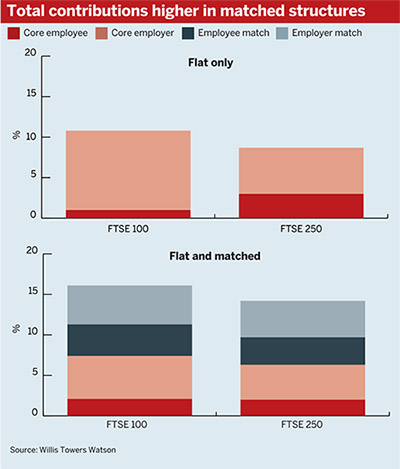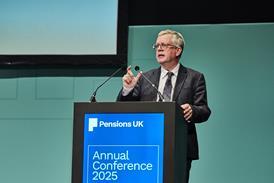Retail banking group Aldermore has increased its matching contribution offering as part of a wider overhaul of employee benefits aimed at improving employee retention.
In an era of flexible working arrangements and waning employee loyalty, UK companies are being challenged to compete with ever-higher expectations of employee benefit offerings, ranging from gym memberships and health insurance, to enhanced defined contribution schemes.
We improved our employee recognition packages to help us retain our people and bring us in line with listed companies. Approximately a quarter of our staff are contributing and receiving the maximum employer contributions
Aldermore Group
FTSE 250 constituent Aldermore Group reviewed its employee benefits strategy during 2015. The Reading-based company not only implemented changes to parental leave for new parents and encouraged employee participation in its recently launched share save scheme, it also increased the level of matching offered in its DC arrangement during the year.
Aldermore previously matched contributions up to 5-7 per cent, depending on when the employee joined, but under the new arrangement, employees have access to matching contributions of up to 8 per cent of pensionable salary, giving them access to double the final threshold planned to roll out under auto-enrolment legislation.
A spokesperson from Aldermore said: “We improved our employee recognition packages to help us retain our people and bring us in line with listed companies.”
The employee response has been positive, with strong take-up of the matching offering. “Approximately a quarter of our staff are... receiving the maximum employer contributions,” the spokesperson said.
Adequacy focus
Retirement adequacy may have slipped down some employers’ agendas over the past 18 months, as legislative change and regulatory overhaul across the DC environment have left many struggling to stay abreast of compliance requirements.
According to research from consultancy Willis Towers Watson last year, compliance is the primary focus for UK employers in their approach to pensions; nearly two-thirds of respondents (57 per cent) to a survey conducted between February and March 2015 rated compliance as one of the top two priorities driving plan decisions, outstripping the 40 per cent of respondents who ranked the ability of workers to retire as a key focus.
Neil Latham, principal in Punter Southall’s DC consulting practice, said employers’ approaches to their pension arrangements remained sector-specific.
Companies with an industrial workforce typically offer a 1 per cent matching arrangement based on employees’ qualifying earnings, which will be subject to steep jumps upwards as auto-enrolment thresholds rise – increasing the risk of opt outs.
“They will probably stick with qualifying earnings because they just can’t afford to go further,” he said.
Latham said financial services present quite a different story, however. “You get white-collar professionals, who can be quite mobile, and they command high salaries and benefits,” he said.
“Anything less than 8 [per cent] doesn’t sound like a particularly generous scheme.”
Lydia Fearn, head of DC and financial wellbeing at consultancy Redington, said communication is crucial to promoting an employer’s offering and driving employee engagement.
“Members and individuals can get confused because there are so many savings ventures for them,” she said. “But if a company is promoting matching, giving more to [employees] and looking more toward their future, I think there can be nothing but positivity out of that.”
Change ahead
In a video interview with Pensions Expert last week, Michael Johnson from think-tank the Centre for Policy Studies spoke of his ambition to complement the new Lifetime Isa with a sister arrangement: the Workplace Isa.
Running in tandem, employer contributions would be directed into the Wisa and be eligible for the same 25 per cent government bonus on offer through the Lisa, but crucially, would be “locked up” until age 60 and treated as a separate retirement entity.
Employee contributions, however, would be funnelled into the Lisa and could be accessed flexibly.
“We are about to enter a key-phase and ramp-up of auto-enrolment,” said Johnson.
“Employee contributions are going to quintuple over the next 30 months, and what I’m very keen to do, as it is very important that auto-enrolment continues its success, is to limit the risks of opt-outs; the Workplace Isa, I think, would remove that risk entirely.”














